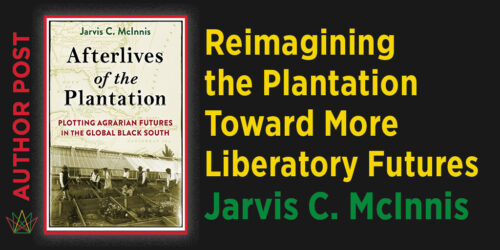Movie Clips from Bombay Hustle
By Debashree Mukherjee

In Bombay Hustle, I revisit the transition to talkies in India with a focus on material practice and techniques of film production. One of my biggest challenges while researching for this book was the fragile and fragmented nature of the official archives of Indian cinema.
Approximately 95 percent of the films made in India during the 1930s and 1940s are considered “lost films” today. Working with a slice of celluloid history has been a challenge as well as a creative opportunity. You can read more about my research methodologies and sources in the book. But for now, I want to focus on some extant and digitized gems that have kept me going over the years. I hope you enjoy these rare clips!
In Bombay Hustle¸ I develop the analytic of a “cine-ecology” to situate cinema as a dispersed and fluctuating form that is coconstituted by its environment. By tracking the practices and itineraries of diverse cine-workers, I am able to relate spatial, infrastructural, and environmental histories of the city. And so Bombay Hustle is as much a story about the consolidation of one of the most powerful film industries in the world as it is a story of Bombay the city. But the connections between cinema and city are not limited to the off-screen world. Similar to early cinema in Paris or New York, the city is one of Bombay cinema’s main protagonists. From the 1910s onward, Bombay filmmakers shot the sights and sounds of the city as an emblem of the modern, while also immortalizing these images as enduring icons of Mumbai.
In this clip from Prem Kahani (trans. Love story, 1937), we see rare shots of Bombay from the 1930s. This scene marks the hero’s first encounter with the big bad city, and the viewer is taken on a vicarious tour through Bombay’s busy streets crowded with pedestrians, shops, advertisements, cars, trams, bullock carts, horse carriages, and all manner of commerce. We are given a glimpse of one of the most photographed landmarks of the city—the Victoria Terminus train station, designed in an over-the-top Victorian Gothic style. The scene opens with a reflexive line about the contemporary city, marked by speed and change. In the following scene, the hero, played by legendary actor Ashok Kumar, meets an icon of the modern city—the modern woman. It is worth noting that unlike classic city vs. country film fables, the modern girl in this film is a confident and compassionate young woman who sacrifices her feelings for the hero when she learns that he has a sweetheart waiting for him in the village.
Chapter 4, “Vitality,” explores the meanings of a pervasive aesthetics of vitality in 1930s Indian cinema. I situate filmic scenes of energetic action within a growing interest in physical culture and bodily vigor that sought to correct decades of colonial-racist assertions about the weak “native” body.
The stunt film was the quintessential genre of profilmic vitality, and the reigning star of Wadia Movietone, Fearless Nadia, was the embodiment of the genre. Blonde, broad-shouldered, and blue-eyed, Nadia was a former circus acrobat of mixed ethnicity who ruled the Indian market for stunt films. In Diamond Queen (1940), Nadia returns home to Diamond Town with a university education in Bombay and physical education in the city’s gymnasiums. She then proceeds to physically vanquish the man forces of evil that have been terrorizing her town and its people. In this early scene we see a slow reveal of Nadia as she makes her filmic “entry,” beating up a local sexual harasser. The fragmented close-ups of her body highlight that Nadia’s body-in-action was the star attraction of the film.
In chapter 6, “Short Circuit,” I describe this scene from the 1937 film Jeevan Prabhat (trans. Dawn of life) in a discussion of location shooting and cinematic imaginations of natural environments. My aim in this chapter is to unsettle boundaries between what is assumed to lie “inside” the world of film production and its supposed “outside,” including climate, topography, even calamity.
The lead couple here, played by the famous star-actress Devika Rani and a debutant Kishore Sahu, are enjoying an idyllic honeymoon picnic gliding along a lotus-filled lake. They are blissfully in love, and the fecund location serves as a reflection of their mental state. This is a tamed environment that presents nature as a background for human flourishing. As the couple sail down the lake in a small boat, human mediation is underlined by the prominent presence of a record player that provides musical accompaniment to the couple’s outdoor reveries. Of course, the gramophone is an ingenious plot device that provides diegetic motivation for the instrumental accompaniment. In these early talkie years, filmmakers were very careful to indicate on-screen sound sources, especially in song sequences.
The film returns to this same location toward the end. The couple have now been torn apart by jealousy, and the heroine has lost her memory owing to severe emotional trauma. The disorder of her mind is cured by a return to this familiar site of ordered nature. Based on medical advice, the hero takes his wife back to the lake, restaging the entire mise-en-scène, as a large group of medical professionals and friends watch from afar. And, what do you know, the heroine’s memory is restored! Nature, artifice, science, and song unite in the service of narrative resolution.
Debashree Mukherjee is the author of Bombay Hustle: Making Movies in a Colonial City. She worked in Mumbai’s film and television industries from 2004–2007. You can save 20 percent on her book and any of our SCMS featured titles when you use code SCMS at checkout now through May 1, 2021.







